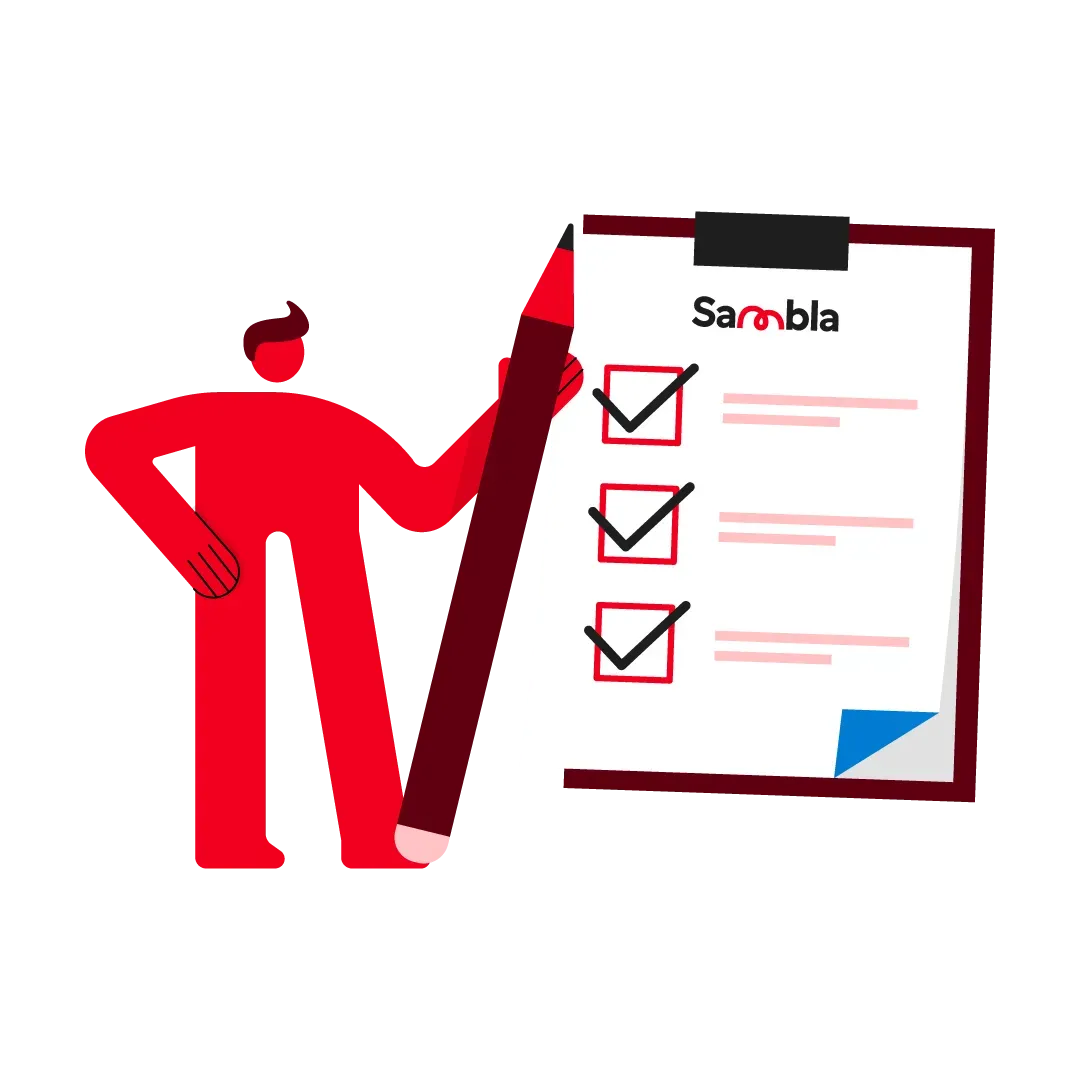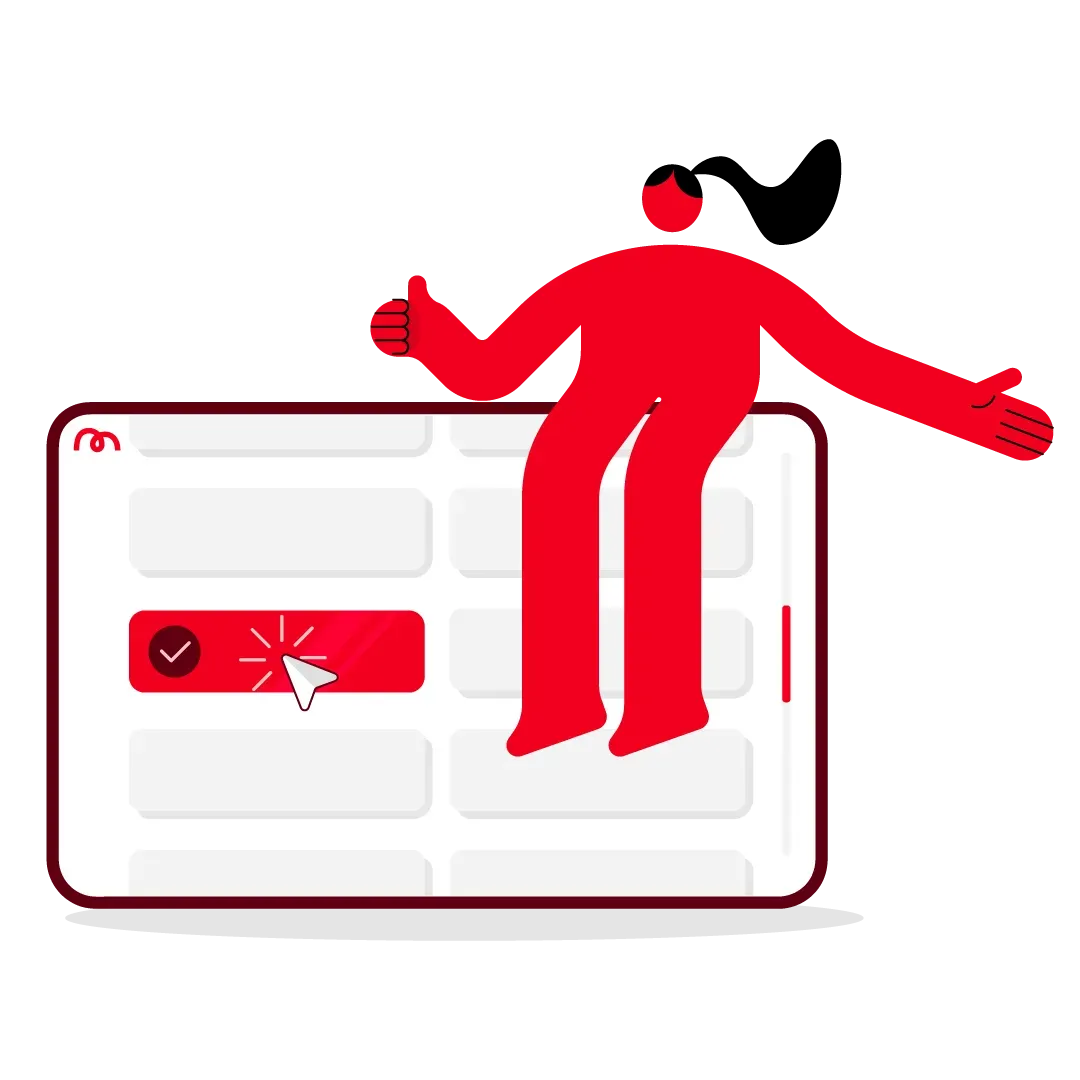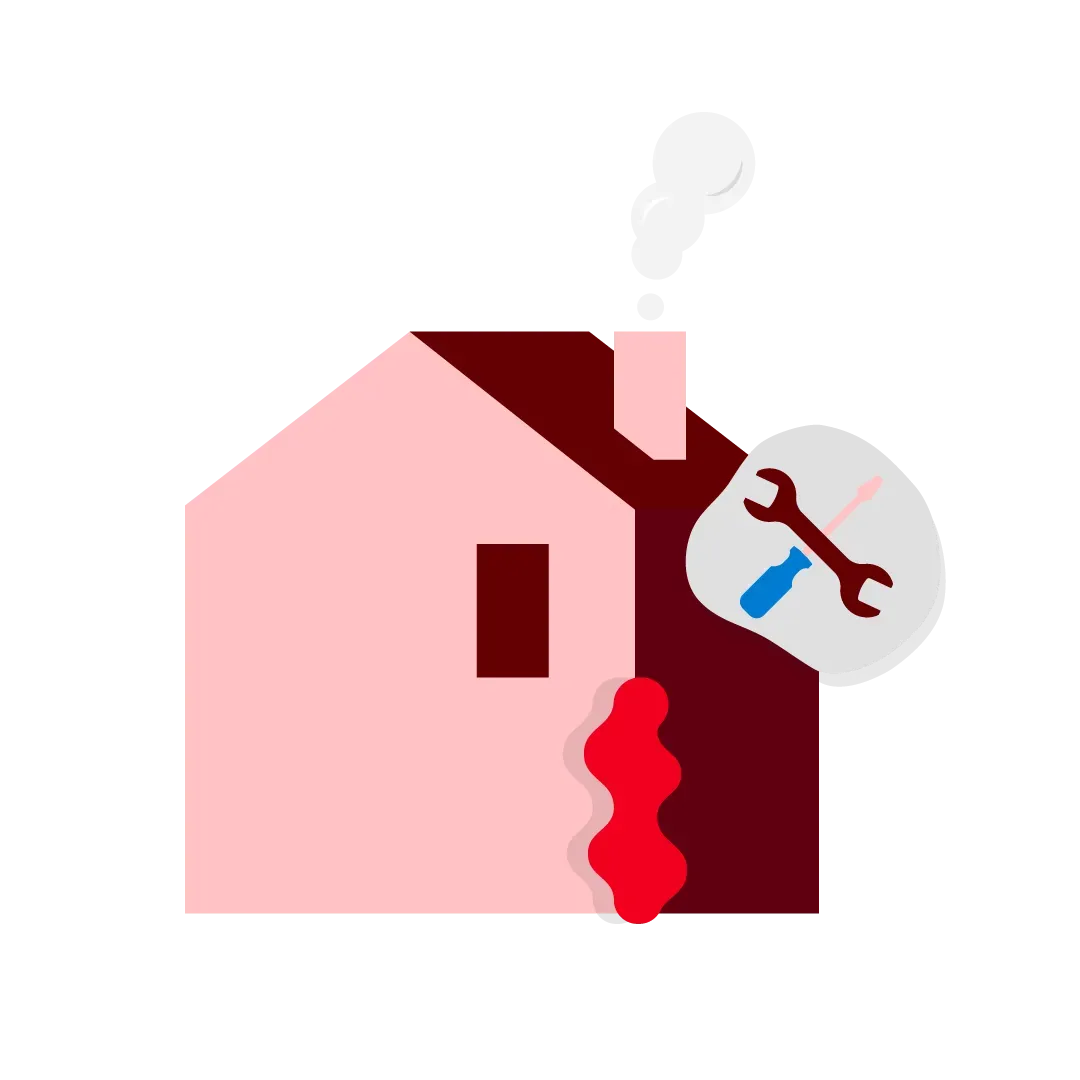Time to review your mortgage? Before one of the biggest deals of your life, it is important to know various factors that affect your loan. Let’s go through them here!
Mortgage Through Sambla – We Can Help You
Is your employment or age considered an obstacle for you to get a mortgage? We can help you find the right one. Sambla works with mortgage banks that welcome customers regardless of employment, financial history or age.
- Completely free of charge
- A helping hand when your bank says no
- Non-binding
- Personal mortgage adviser
Contact Us
- Phone: +46 770 22 01 80
- Email: team.bolan@sambla.se
Compare mortgages by filling in the form, or contacting us on +46 770 22 01 80 or team.bolan@sambla.se – and we’ll be in touch.
Requirements to Get a Mortgage
- 18 years of age or older
- Debt-free at The Swedish Enforcement Authority (Kronofogden) for at least six months

What is a Mortgage?
A bigger loan amount at a lower interest rate – that’s the model for a classic mortgage, or housing loan as it’s also called. In other words it is a larger loan that is used to buy an apartment, a house or another form of property.
You can also take out a mortgage to finance extensions and renovations. The property acts as security for the loan in these cases as well, even if the money is used for something else.
The Mortgage has The Home as Collateral
For the average person, housing is often the most expensive purchase in life, and this usually means that you need to borrow a lot of money. When a bank gives you a mortgage, they always have the home as collateral, which enables favorable terms.
On a housing loan the term is very long – 30 years is common – and the interest rate is generally lower than for example on personal loans or payday loans. But it is really important to compare loans before you sign a contract.
A decimal higher or lower can really make a big difference to how much your mortgage costs, as the loan amount is so large. Especially considering that mortgage interest rates have increased a lot in recent years.
Is it Possible to Take Out a Mortgage For a Land Lot?
The short answer is no, you cannot take out a mortgage to buy a land lot. This is because it is not legally possible in Sweden to use a lot as collateral on a mortgage loan.
You could explore the option of a land loan in the form of a personal loan, as well as as a short-term construction loan.

Mortgages and Home Purchases – This is How it Works
1. Get a Mortgage Agreement in Principle
The first step is to apply for a mortgage, and get a preliminary offer in the form of a mortgage approval in principle (AIP). You can do this easily online, for example by using Sambla, which optimizes your possibilities of getting a good interest rate.
The AIP indicates how much you’ll be able to borrow from your bank once you have found a home you want to buy. An AIP is valid for a limited time, for example three or six months.
2. Start Your Bidding
Your mortgage agreement in principle shows exactly how much you have to work with – at least when it comes to your mortgage. If you can raise your own funds, you can buy a more expensive home.
You do not have to state the amount of your AIP to the real estate broker, but it can be good to be able to show that you have been granted a new mortgage. Now all you have to do is enter the bidding!
3. Sign the Contract and Pay the Down Payment
The writing of the contract usually takes place fairly immediately after the bidding has ended. When you and the seller have signed the agreement, it’s time to pay the down payment, which is usually 10% of the purchase price. The down payment, not to be confused with the cash deposit, ensures the seller of your true intentions. Usually the money needs to be paid no later than 10 days after the contract is written.
4. Get Access and Pay the Remaining Amount
On the day of admission, which often would be two or three months after the writing of the contract, you pay the remaining amount and the deal is closed.
Usually, you’ll never see any money in your own account when you take out a new mortgage. The transfer takes place between your bank and the seller’s bank at an agreed time.

How Big of a Mortgage Can I Apply For?
The mortgage ceiling is a rule that was introduced in Sweden in 2010 and applies to all mortgages. In order not to risk taking out a mortgage you can’t afford, and as a guarantee for the bank, you can borrow up to 85 percent of the home’s value at the most. The remaining 15 percent, the mortgage deposit, you must finance with other means.
No Mortgage Without a Deposit
In the past, you had to be able to present big cash savings when you wanted to buy a home, but today it is all right to borrow for the deposit as well – if you have room for it in your finances. At Sambla, you can apply for a personal loan for a cash deposit from over 40 banks and lenders at the same time.
However, remember that every loan you take out affects how big your mortgage loan can be. You always win by investing as much as possible with your own funds when buying a home.
Because of this law, getting a new mortgage without a cash deposit is therefore not possible today. Some actors try to entice customers with no-interest mortgages in their marketing, but then it is always a matter of taking out a loan to cover the cash investment.
Read more: Savings account
Mortgages are Always Assessed Individually
How much you can borrow is evaluated individually and depends on a number of criteria. As usual, your income plays a big part. Other factors are, for example:
- Number of people in the household.
- If you have children.
- Existing debts.
- Marital status.
- If you have other homes that you’re keeping.
- Student loans.
- Number of cars in the household.
These things affects both the size of your mortgage and the interest rate you’ll be able to get.
Debt Ratio
All banks in Sweden use debt ratio to calculate the maximum amount of your home loan. It is common for the ceiling to be five or six times your annual income before tax.
However, the bank has the right to set any limit they want. Therefore, the ceiling on your offers may look a little different when you compare mortgages.
If there are two or more people co-applying for a mortgage, the bank will count on your combined annual income.
Loan-to-Value Ratio
When you want to buy a home, the bank must of course make sure that you will be able to make the repayments on the loan. The loan-to-value ratio, i.e. the size of the loan in relation to the value of the home, is therefore also an important parameter in the calculation. The higher your loan-to-value ratio, the more you have to pay back each month.
If you already have existing loans or major current expenses, the bank may make the assessment that you cannot handle the loan-to-value ratio you are applying for, even though the amount is on the right side of the debt ratio ceiling.
Read more about the loan-to-value ratio in the section on amortization below.

This is How Much Your Mortgage Will Cost
The monthly costs for a mortgage may seem high, but in reality it is only the interest that costs – the rest you pay back to yourself. Here we take a closer look at what interest and amortization actually mean.
Mortgage Interest – A Cost with Benefits
The nominal interest rate is the fee you pay to the bank to borrow money. Effective interest rate is the nominal interest rate plus all additional charges. This could, for example, be about set-up fees, notice fees and reminders.
In Sweden the policy rate is set by Riksbanken, which affects all other interest rates in our society. The policy has been raised sharply in recent years after being at record low levels for many years. This means that mortgage interest rates have now risen in Sweden, which makes it extra important to compare and be thorough before signing a mortgage.
Mortgage Banks are Calculating for Higher Rates
In view of the situation, the banks also need to calculate for the interest rate to be raised further – and make sure your personal finances can withstand further increased interest rates for you to be able to get a housing loan. Different banks make this assessment differently – which is why it is beneficial for you to compare.
It is also good to know that the government in Sweden grants mortgage interest deductions of 30% up to SEK 100,000. A deduction of 21% is given on amounts above that.
The deduction takes place directly in your tax declaration, which means that you pay the full agreed interest amount to the bank every month, and that the money is then deducted with the tax refund every spring.
Variable or Fixed Interest – Or Both?
When you enter into an agreement for a bank loan, you negotiate a final interest rate – the figures you previously received are only preliminary. The interest rate can be variable or fixed.
A variable mortgage means that the interest rate is only fixed for three months at a time and changes according to movements in the interest rate market. On a fixed mortgage, the interest rate is fixed for an agreed longer period, usually between 1 and 5 years.
If you are looking for the cheapest mortgage you can find, you should choose variable interest rates, as this has historically meant lower costs over time. But there are advantages and disadvantages to both variants. A common recommendation is to divide the loan into a variable and a fixed part.
Pros and Cons of Variable Interest
Variable interest is usually a little lower than fixed interest, but the risk you take is also greater. During periods of rapid and uncertain interest rate changes, it can be dangerous to choose a variable interest rate, as your monthly costs can suddenly become much greater.
Just because it is time to buy a home, it is not certain that you know how long you intend to live in your new home. In that case, variable interest is preferable, as you avoid additional fees to end your mortgage on the day you possibly sell. This is because you have to compensate the bank for the time that had left on your mortgage.
Advantages and Disadvantages of Fixed Interest
If you fix your interest rate, it will remain fixed for a specified period of time, usually between 1–10 years. Although your fixed interest rate may be a few tenths higher than the best variable offer, it means a great deal of security against the fluctuations of the market.
If you know for sure that you will live in your new home for a long time, fixed interest can be a safe alternative. It will usually be a bit more expensive – but at the same time you know how much your accommodation will cost for a long time to come, regardless of market fluctuations.
If you have a fixed mortgage but would have to sell early, you must pay interest compensation to the bank. You can only work out exactly how big it will be on the day the loan is to be paid off, because a calculation is made on the current market interest rate, but the bank should be able to give you an approximate figure.
Want to know more about negotiating mortgage interest rates? Contact Us.
Amortization – How Much Do I Need to Pay on My Mortgage?
Amortization is the amount of your mortgage you pay back to the bank. The repayments take place monthly together with the payment of the interest. How much of the debt you have to repay depends on the loan-to-value ratio, i.e. the loan amount in relation to the home’s value.
Amortization is a Requirement with New Mortgages
As of 2016, it is a requirement in Sweden that all new mortgages must be amortized down to at least 50 percent of the home’s value. After that, amortization is not a must. The purpose of the requirement is to reduce the Swedes’ debts and to slow down the rampant prices on the housing market.
In 2018, an extra amortization requirement was also introduced on mortgages for those who borrow more than 4,5 times their gross income. For mortgages taken before 2014 and 2018 respectively, these requirements do not apply, regardless of whether the loans are renegotiated or moved. However, an extension of the mortgage may affect the amortization requirement.
How many percent of your mortgage you need to amortize each year depends on the loan-to-value ratio. For new mortgages, the amortization rules in Sweden are as follows:
- Loan-to-value ratio of 50 percent or less of the home’s value: If your loan-to-value ratio is 50 percent or less, there are no requirements for amortization. However, we recommend that you continuously pay off your mortgage, as it is a good investment for your future finances.
- Loan-to-value ratio above 50 percent of the home’s value: If your mortgage exceeds the 50 percent limit, you must repay at least 1 percent per year of the total amount of the mortgage.
- Loan-to-value ratio above 70 percent of the home’s value: If your mortgage exceeds the 70 percent limit, you must repay at least 2 percent per year of the total amount of the mortgage.
- Housing loans of more than 4,5 times your gross income: “The stricter amortization requirement” applies to new mortgages and means that you must repay 1 percentage point extra per year if the loan amount exceeds 4,5 times your income before tax.
A Calculation Example:
You are buying a property and you take out a mortgage of SEK 1,000,000. The home’s value is SEK 1,800,000 and you thus end up with a loan-to-value ratio of over 50 percent. You have chosen a fixed interest rate of 1.70% for 3 years.
Your amortization per year and month: 1,000,000 x 0.01 (1%) = SEK 10,000 per year = approx. SEK 833 per month Your interest cost per year and month (before interest deductions): 1,000,000 x 0.017 (1.7 %) = SEK 17,000 per year = approx. SEK 1,417 per month
Total to pay for your mortgage per month: SEK 833 in amortization + SEK 1417 in interest = SEK 2250.

Apply For a Mortgage Agreement in Principle – Fast, Simple and Flexible with Sambla
The first step towards your new home is a mortgage approval in principle (AIP). With an AIP from your bank, you can start participating in bidding and be safe in the knowledge that you can afford the purchase.
The AIP is based on the information you entered in your application. The bank always double-checks that what you entered is correct and they assume that there are no drastic changes in your finances during the period when the agreement in principle is active. When you win a bidding your AIP is converted into a real mortgage and then you also negotiate the final interest rate.
Use Sambla Instead of a Loan Calculator
It is true that all banks have their own mortgage calculator where you quickly and easily fill in your information and get a preliminary figure for your mortgage. You can then proceed with your application. But instead of visiting each individual bank, you can use our service to send the information to all our partners at once. It not only saves you time – you also avoid unnecessary credit reports that impairs your chances of getting good loan terms.
Find Your Cheapest Mortgage Without Wasting Your Time
Often people who want to move to a new and bigger house push their loan-to-value ratio to the maximum. Especially for first-time buyers a maximum loan may be required to get into today’s tough housing market.
As this affects the amortization terms and thus the monthly expenses, it is important to get as low an interest rate as possible on the mortgage. You get that by using a mortgage brokerage service like Sambla.
We Let You Compare Mortgages Without any Rush
Those who settle for a mortgage AIP from the first bank they apply to often don’t get the best deal. When you compare mortgage interest rates via Sambla, you can be sure not to miss any offer.
Every bank benefits in the long term from you having a mortgage with them, so provided your finances hold, they will all want you as a customer. By comparing the banks against each other, you get the interest rate down as much as possible.
A big advantage of our service is that you only need to fill in your information once, and then wait for a response from all potential lenders. A single joint credit report, which does not significantly affect your credit rating, is a small price to pay in this context.
Renegotiation or Transfer of Mortgage
Sambla can also help you to renegotiate your existing mortgage. Our recommendation is that you try to renegotiate the terms once a year, when you have had time to amortize a considerable sum and perhaps also got a better economy overall.
It is also good to move your mortgage to another bank if your current bank is not interested in a renegotiation. Just like when you apply for brand new loans, you can send your request to move your mortgage to all of our partners at once. If nothing else, it gives you a better negotiating position with your existing bank.
Mortgage Despite Payment Remark? Not Impossible
Payment notices at The Swedish Enforcement Authority usually indicate financial concerns. This is not something the bank takes lightly. The requirements for mortgages are also higher than for other types of loans. But that doesn’t mean the door is completely closed.
For many lenders, it is more important how your finances look now than when you received the payment notices. You may have received permanent employment and a higher salary or the payment notice may have been the result of a temporary setback – each case is unique and the bank’s assessors are not impossible.
Are you having trouble getting a mortgage? If you have a fellow applicant in your application, which technically means a person who is responsible for the debt together with you, that can solve the problem. In that case, the bank will consider the co-borrower’s financial situation instead.
Do you want to apply for a mortgage with a payment notice? Contact us and we will help you.
Mortgage Despite a Low Income
If you have a low income, if you’re young or perhaps if you’re a student, it may be a bit tougher to get a mortgage. One way to solve this is for example having a parent that co-signs the mortgage, or if you have a co-borrower who can share the responsibility of the mortgage with you.
Mortgage Without Permanent Employment
In the past, a permanent job was required to get a mortgage. But today it’s not as important. Naturally you can have a very steady and high annual income despite not having a permanent job – and that is really what is important.
How Do I Find the Bank With the Best Mortgage For Me?
Which bank has the best mortgage? You could use a comparison site and see what other customers think, but really the question is impossible to answer until you have compared different offers.
If you already are a customer at a certain bank, there is a greater chance that you will get a more favorable interest rate there than with a competing bank. But the interest rate is not the only thing that determines how good a mortgage is.
Some lenders offer a wide range of services and have good customer support, while others who may be able to give you a better interest rate expect you to do everything yourself online.
Availability, loan amount, interest rate, repayment period and the level of assistance from the bank before the purchase – all of this is important when making your decision.
Other Ways to Get a Better Interest Rate on Your Mortgage Loan in Sweden
In order to prevent global warming and create a more sustainable society, both the Swedish state and the banking system invest heavily in green energy and climate-smart new construction. For those who want to move to a new and modern home, this means that you can get a better interest rate on your mortgage.
Green Mortgage – For a Sustainable Future
At many banks you can get a “green mortgage” when you buy an energy-efficient home. The requirement for you to receive a discounted interest rate is that your home has been graded A, B or C in the energy declaration, that it is eco-labelled or that it is located in an environmental building.
New construction often meets the criteria, but even older buildings can be energy efficient, especially when they have been upgraded to modern standards. If you are unsure, it is a good idea to carry out an energy declaration on the home you are interested in before you apply for your home loan.

Mortgage for Renovation and Improvements
You can also extend your mortgage to pay for renovations for your house. When installing green technology, for example solar cells, you get substantial tax deductions for both work and materials. The maximum amount for tax reduction of green technology is SEK 50 000 per year per person.
Do you want to renegotiate or extend your current mortgage, change banks or compare mortgages? With us, you complete your application within a few minutes and receive an answer shortly. Please get in touch and we will guide you step by step!











